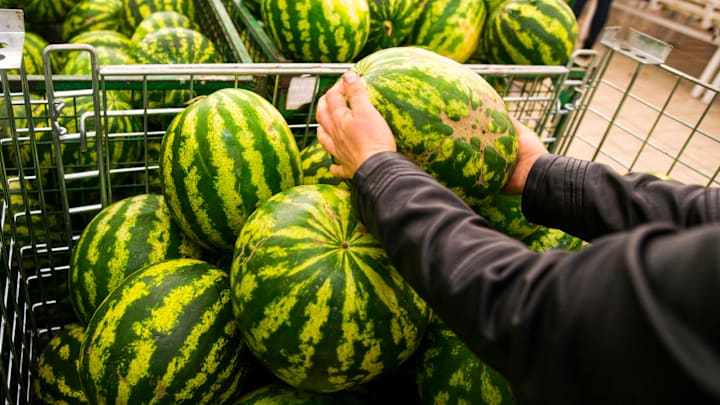Buying a watermelon is an experience one can grow to resent. The 92 percent moisture content of Citrullus lanatus means you’e basically buying a giant ball of water. On the plus side, they’re delicious and packed with enough vitamin C and D to keep you from getting scurvy.
But how to select the best of the batch? Food writer and editor Emma Christensen offered some advice over at kitchn, and it involves a little weight-training. When you examine watermelons in the produce section of your local grocery, you want to look for the heaviest one for its size. The denser the fruit, the more juice it has. That’s when it’s at its most ripe.
Next, check the underside of the watermelon for the “splotch.” That’s the yellow patch the watermelon develops by resting on the ground. If it’s a creamy yellow, it’s also a good indicator of being ripe.
Finally, give the underside a little smack—not aggressive enough to draw attention from grocery workers, but enough so that you can determine whether the watermelon sounds hollow. If it does, that’s good. If it sounds dull, like you’re hitting a solid brick of material, it’s overripe; put the watermelon down and slowly back away from it.
If you’re not confident in your watermelon evaluation abilities, there’s another option: Local farmers markets typically have only choice product available, so any watermelon you pick up is likely to be a winner. You can also ask the merchant to pick one out for you. Pay attention to what he’s doing and then try to emulate it the next time you’re forced to choose your own produce.
[h/t: kitchn]
A version of this story originally ran in 2018; it has been updated for 2023.
